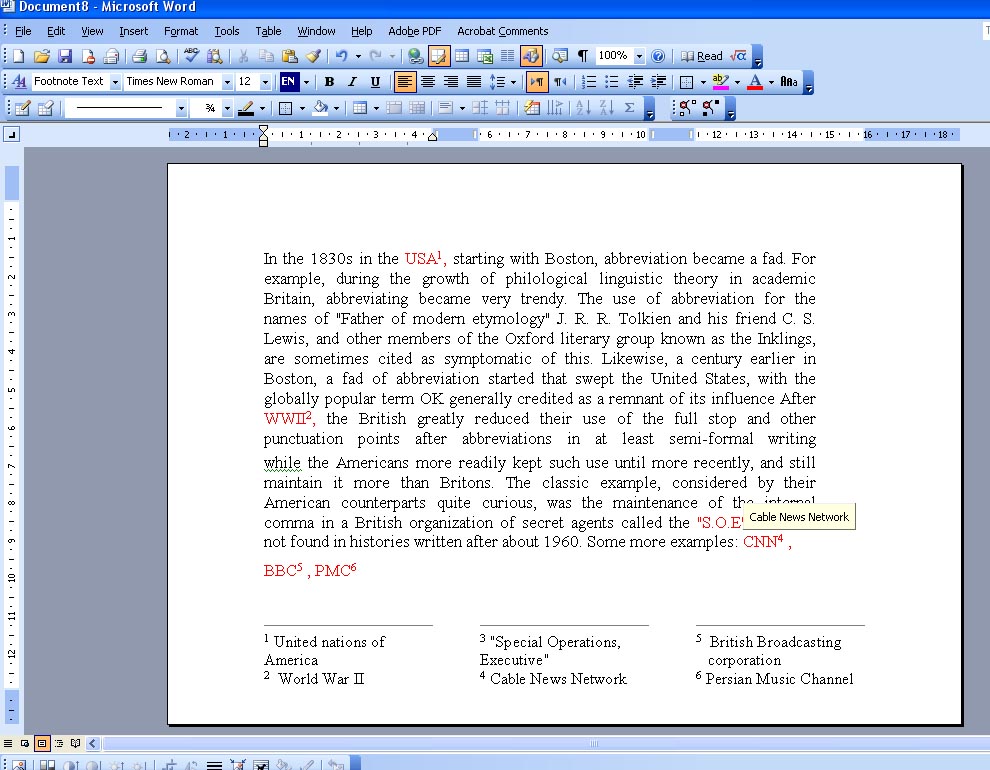


You also can't query the number style in the way that you want to that number style would indicate Word's sequential lettered notes, not custom marks. I would be VERY grateful for some help with this! Thankyou.įor whatever reason, you cannot convert an individual footnote directly. I also tried If = wdNoteNumberStyleLowercaseLetter I'm not really a programmer, just a keen Word user. I thought stipulating the NumberStyle in the above would work it doesn't. NumberStyle = wdNoteNumberStyleLowercaseArabic NumberStyle = wdNoteNumberStyleLowercaseLetterĪ).EndnoteOptions With ActiveDocument.Range(Start:=, End:= _Ī).FootnoteOptions I can convert all footnotes to endnotes with: Sub ConvertFootnotesEndnotesTEST() I want to convert ONLY the footnotes with letter marks, into endnotes. There are two types of custom mark: numerals and letters.

Remember, too, that you can format the style of your endnote/footnote as discussed in the Modifying a Style section.I have a Word doc with lots of footnotes that are all custom marks, none automatically numbered. See Adding Page Numbers for more information on creating sections. To do this, each chapter will need to be its own section. You can have your footnotes and endnotes restart their numbering in each chapter.To adjust the settings of your footnote, including the numbering style, when to start and stop the numbering of your notes, etc., click on the Expand icon in the Footnotes Group of the References Ribbon.On the References Ribbon, in the Footnotes Group, click either the Insert Footnote or Insert Endnote icon.Put your cursor where you want to insert your new footnote or endnote.They will automatically format both in-text citations and works-cited lists. These citation management applications allow you to store your citations and insert them into Word. You can use the method below, or you may want to explore the use of EndNote, Zotero, or Mendeley. You can insert footnotes or endnotes as needed into your dissertation.


 0 kommentar(er)
0 kommentar(er)
